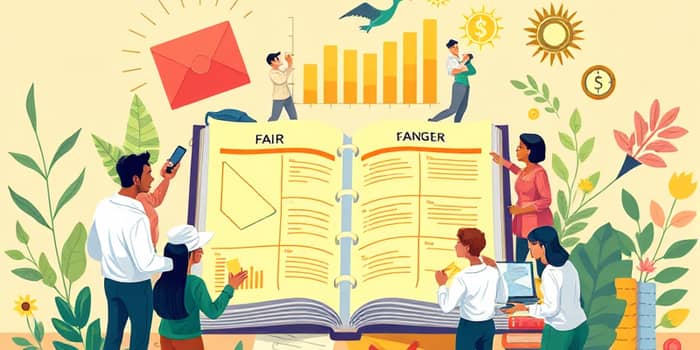
In today’s fast-paced financial world, the choices lenders make ripple through economies and communities. Ethical lending is not just a compliance checkbox—it is a cornerstone of sustainable growth.
When lenders prioritize social welfare alongside profits, they foster trust, stability, and long-term prosperity.
At the heart of every loan is a human story: a family buying a home, an entrepreneur launching a business, or a student investing in education. When lenders act responsibly, they empower borrowers and build social capital. Conversely, unethical practices erode public trust and can trigger financial crises.
Protecting vulnerable consumers and strengthening markets is essential. Data from 2009 shows commercial and industrial loans on U.S. bank balance sheets plunged by 18.5%, highlighting how risk mismanagement can undermine entire sectors.
By embedding ethics into lending, institutions safeguard their reputations and enhance long-term profitability.
Ethical lenders ground their operations in well-defined principles:
These principles form the backbone of ethical conduct, ensuring every loan serves both the lender’s and borrower’s best interests.
Laws and regulations guide and enforce fair lending practices. Key frameworks include:
In addition, many banks adopt internal codes requiring contribution to public interest and welfare. For example, KB Kookmin Bank codifies professionalism, independence, and societal contributions within its lending policies.
Different lending structures distribute risk and rewards uniquely. Understanding each model helps institutions design ethical, profitable products.
Each model presents unique challenges: balancing institutional profit with borrower welfare requires tailored policies and oversight.
Lenders track multiple metrics to gauge performance, but they must interpret these through an ethical lens.
Large loans can be lucrative in bull markets, yet expose institutions to greater volatility. Conversely, smaller loans (<$270,000) typically yield steadier returns but underperform in boom cycles. An ethical approach requires transparent communication about these trade-offs.
Even with robust frameworks, dilemmas arise:
Institutions must establish remediation protocols. When algorithmic or human errors lead to unfair outcomes, immediate corrective action and customer restitution are essential.
Building an ethical lending culture demands ongoing commitment:
By embedding these practices, lenders can maintain ongoing review of loans and exposures that protect both the institution and its customers.
Responsible lending benefits the broader economy. Well-capitalized banks offering fair loans enable businesses to grow, create jobs, and spur innovation. When borrowers gain access to sound financing, default rates decline, and communities thrive.
Lenders that pursue profit at any cost may boost short-term returns but undermine long-term stability. On the other hand, institutions that synchronize preventing customer hardship through prudent lending with sustainable growth generate trust, brand loyalty, and resilience against market downturns.
Ultimately, ethical lending is not a constraint on profitability—it is a strategic advantage. By championing fairness, transparency, and responsibility, lenders align their success with societal well-being, crafting a legacy that endures through market cycles and economic shifts.
In an era where finance touches every corner of life, the true measure of success lies in how profits serve people. Ethical lending sets the course, ensuring that the pursuit of gain never eclipses the commitment to human dignity and shared prosperity.
References













